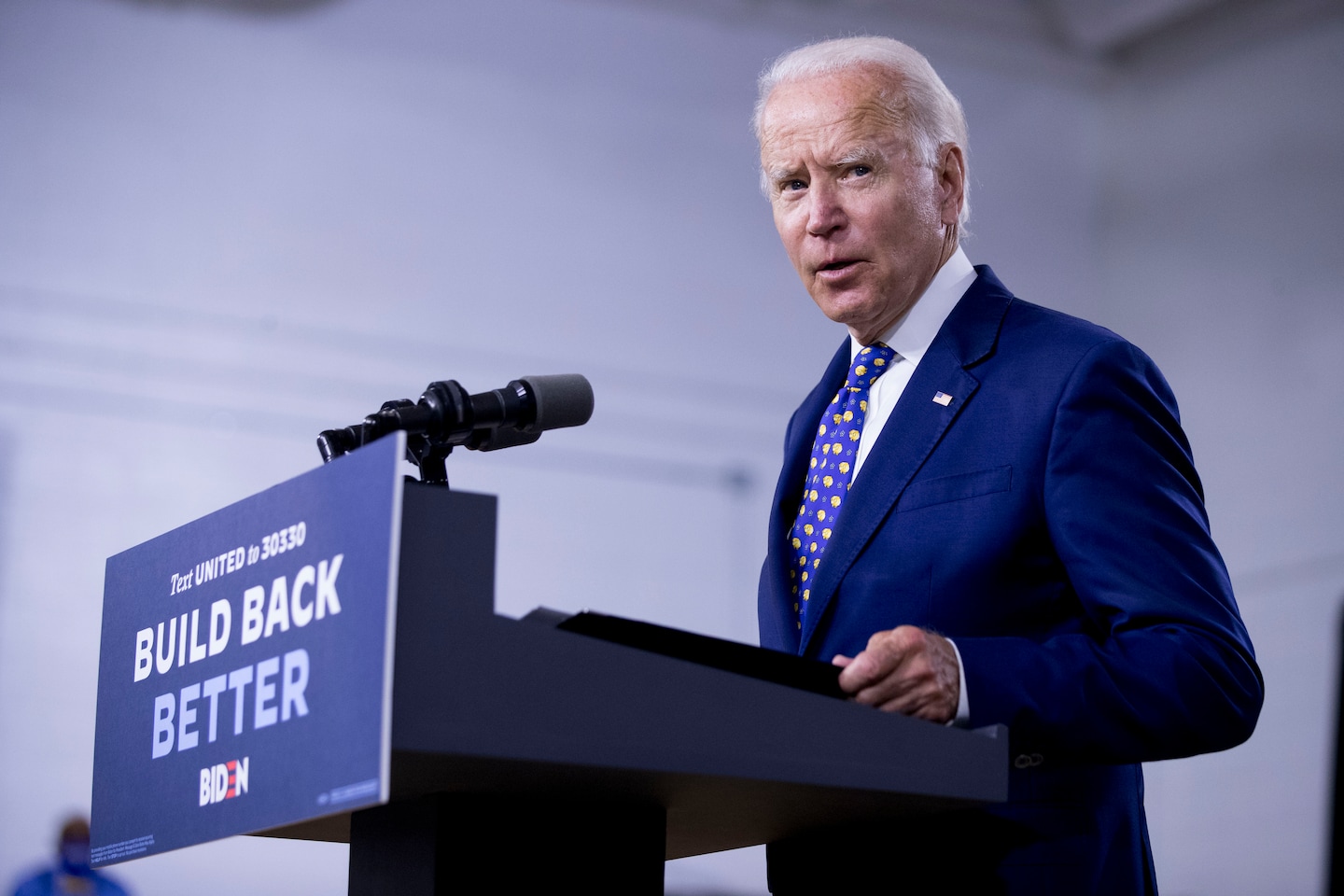The measures of a successful vice-presidential pick

But helping to win a pivotal state is by no means the only measure of a successful vice presidential pick. Presumptive Democratic nominee Joe Biden is doubtless well aware that there are other important ways the candidate for No. 2 can “bring real strength to the ticket,” as Franklin D. Roosevelt put it in a letter endorsing Missouri Sen. Harry S. Truman or Justice William O. Douglas as his running mate in 1944.
For Biden, the first is choosing someone well-suited to be president, if necessary, on a ticket that embodies the glorious diversity of America. (Until now, our vice presidents have included zero women, zero African Americans and exactly one traditional practicing Catholic — Biden.) Here are some other measures:
Provide personal chemistry with the nominee. In the summer of 2004, the Democratic nominee, Sen. John F. Kerry (Mass.) was so queasy about choosing the widely-recommended Sen. John Edwards (N.C.), whom Kerry viewed as insincere and undependable, that he called his Massachusetts colleague Ted Kennedy and said, referring to the senator from Connecticut, who was Kennedy’s close friend, “Make the case for Chris Dodd.”
In the end, Kerry did not choose Dodd, whom Biden has now asked for help in selecting a running mate. But Kerry’s qualms about Edwards were later proved right when Edwards did not live up to his private assurance that he would not run in 2008 if Kerry were considering the race. (Kerry didn’t end up running.)
By contrast, Jimmy Carter, trusting his instincts about personal chemistry, chose Walter Mondale, whom he scarcely knew, forming one of the closest White House partnerships in history.
Shore up the nominee’s weaknesses, personal or political. Facing a campaign against the magnetic John Kennedy in 1960, Richard Nixon understood his limitations as a candidate. He offered the No. 2 job to the popular, extroverted Nelson Rockefeller, who had just been elected New York governor by a landslide, had access to millions to spend on his own campaigns and was the hottest political property of the then-powerful Northeastern Republican bloc.
Had Rockefeller agreed, Nixon would probably have defeated Kennedy, as Robert Kennedy later acknowledged. Instead, Nixon chose Henry Cabot Lodge of Massachusetts, the U.S. ambassador to the United Nations, who brought little to the ticket.
With the opposite aim, George W. Bush and Barack Obama, who both lacked much national experience, made up for that deficit by choosing well-seasoned running mates, Dick Cheney and Biden.
And in 2004, Kerry’s most astute choice might have been House Minority Leader Dick Gephardt, the son of a St. Louis milk carrier. Gephardt could have helped soften Kerry’s patrician image in the Midwest and won him the election by taking Ohio and its 20 electoral votes, which George W. Bush ultimately won by just two percentage points.
Reinforce the nominee’s message. In 1948, the 64-year-old Truman chose Senate Minority Leader Alben Barkley, 70, of neighboring Kentucky — conveying that his was a ticket of centrist, experienced pros well equipped to deal with the dangerous post-World War II era.
Likewise, resisting those who preached a more balanced ticket, Arkansas Gov. Bill Clinton, in 1992, chose Sen. Al Gore of Tennessee, another young, moderate Southerner, which suggested that this was a pair of “New Democrats” ready to confront the lingering conservatism of the post-Ronald Reagan era.
Demonstrate the nominee’s good judgment — or lack thereof. In 1972, when Sen. George McGovern (D-S.D.) chose Senate colleague Thomas Eagleton (Mo.) and then dumped him 18 days later, after revelations about Eagleton’s hospitalizations for depression, it undermined confidence in McGovern’s decision-making. Nixon twice chose Spiro Agnew, who in 1973 was forced to resign to escape a possible prison sentence.
In 1984, Mondale selected Geraldine Ferraro, who was shadowed by questions about her husband’s finances. And in 2008, Alaska Gov. Sarah Palin — John McCain’s surprise choice after he was frustrated in his desire to select Democratic Sen. Joseph Lieberman — showed that she fell considerably short of being ready to assume the presidency.
Make a nominee’s ideological profile more appealing. By substituting Truman as vice president in 1944 for the dreamy, left-leaning incumbent, Henry Wallace, Roosevelt hoped to show that his postwar administration would be more centrist because after a time of tumult, “you have to digest it.” At the 1952 Republican convention, after narrowly besting conservative Ohio Sen. Robert Taft, Dwight D. Eisenhower united the party by anointing Nixon, who — although he had secretly favored Eisenhower — was popular with the Taft wing.
In 1976, President Gerald Ford, who had almost been defeated by Ronald Reagan in Kansas City, accepted Reagan’s suggestion that he choose conservative Kansas Sen. Robert Dole, which made it so much easier for many bitter-end Reaganites to support the ticket that Ford nearly won in November. Four years later, when Reagan became the nominee, he immediately positioned himself as a more centrist national candidate by selecting his more moderate ex-rival, George H.W. Bush.
We are now about to see how wisely Joe Biden has chosen.
Read more:






